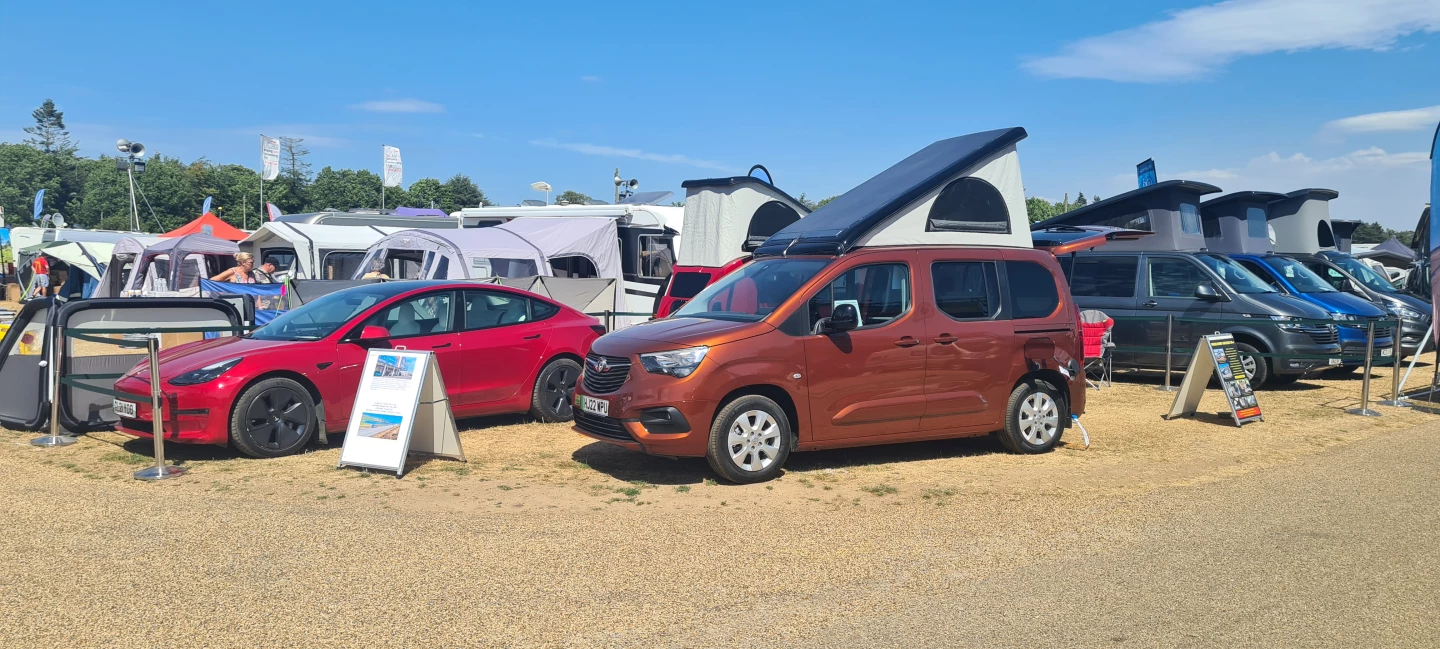Something of a legend around these parts, the British-designed Wheelhome Vikenze has long been one of the smallest, most efficient mini-campers in the Western world. It's one of the few camper vans out there that can be equipped with a single-person floor plan, encouraging adventurous lone wolves to truly escape it all and reconnect with nature. The latest variant protects nature a little more, building upon the Vauxhall Combo-e Life to go fully electric, both on the road and at camp. If the weather's good, it can even camp off-grid indefinitely, serving as a modern-day answer to Thoreau's cabin.
Wheelhome has gone all in on electric power, creating an all-electric camping floor plan to complement the Vauxhall Combo-e Life's 50-kWh battery-powered 134-hp powertrain. Wheelhome has experience in this area, as it has been offering all-electric camper van conversions for years, including on the Fiat-based Vikenze II we looked at back in 2016. Since that time, it's also built an innovative expandable "e-caravan" called the Dashaway that runs purely on electric power, with no need for an LPG tank.
So the Vikenze III-e marries Wheelhome's tried-and-tested electrical camping architecture with an all-electric base van for the first time. That all starts with a 640-Ah lithium auxiliary battery squeezed neatly between the driver cab seats. A 300-W rooftop solar array charges the leisure lithium for roughly a week of off-grid power in poor weather right up to indefinite self-sufficiency in bright weather, according to Wheelhome. More specifically, the company points out that the solar system developed 140 percent of its electric camping needs in "reasonably bright weather" during testing.

Wheelhome qualifies the Vikenze III-e kitchen area as its most advanced all-electric cooking system, comprising a single-hob induction cooktop, microwave, top-loading 18-L Waeco compressor fridge, and set of 230-V sockets positioned for using a toaster, kettle or other electric appliances. All those cooking appliances can be powered by the battery pack and 3,000-W inverter or shore power when at a campground with hookups.
As far as the greater floor plan, buyers can choose between single- and double-sleeper layouts. The foldable 79 x 26-in (200 x 66-cm) lower single bed comes standard, and a 75 x 36-in (190 x 92-cm) single in the electrically raised pop-up roof is available optionally. The 2TS floor plan includes just the two cab seats for driving and two non-belted rear seats for use at camp, while the 4TS plan has four belted Vauxhall passenger seats.

Below a swing-away section of the kitchen block, Wheelhome has squeezed in an available portable toilet to ensure the traveler never has to be without, a perfect fit for a solo camper van in which only the bathroom goer has to endure the aftermath of the toilet being used inside the van. The toilet can be easily removed thanks to a rear console hatch inside the passenger-side sliding door, which also accesses the 10-L water canister that feeds the sink via an electric pump.
Many camper companies are happy to merely jot down the van manufacturer's range estimate, but Wheelhome spent considerable time testing the Vikenze III-e earlier this year to provide a more accurate real-life performance picture. It notes that it was able to achieve the Combo e-Life's WLTP-estimated range of 174 miles (280 km) during nice, temperate 20 °C (68 °F) weather. At that temperature, it likely didn't need to operate much heat or A/C.

Wheelhome says that during the cooler, windier 9 °C (48 °F) temperatures it experienced during much of its 2,104-mile (3,386-km) 16-day round trip between Essex, UK and the Shetland Isles, the Vikenze III-e's average range dropped to roughly 150 miles (241 km) per charge. The best range of the trip was just under WLTP at 170 miles (274 km), on one of the warmer days.
Wheelhome recommends Vikenze III-e drivers plan to stop for charging every two hours or so with the expectation of keeping hooked up for 30 to 40 minutes. It also notes that it was able to charge at campsites with hookups, so if travelers select capable campgrounds, they can finish the day off at camp with a low battery and head back out on the road in the morning with a full charge.

In terms of cost, Wheelhome says that charging for its May 2022 Shetland trip came in at a total of £125 (US$150), estimating that figure at 28 percent what it would have cost to run the same trip in a 40-mpg petrol camper. The 40-mpg figure comes from Wheelhome's 40- to 48-mpg fuel economy estimate for its 1.2-liter petrol-engined Vikenze III camper van.
Out of dutiful curiosity, we double-checked Wheelhome's math, averaging out the price of gasoline over the month of May using the UK government's weekly fuel price sheet. That came out to 179.70 pence per liter or £8.09 per imperial gallon. The 2,104-mile trip would have taken 52.6 imperial gallons of fuel, which would come out to a total cost of about £425 (US$515). Using that cost, Wheelhome's £125 all-electric trip is just over 29 percent the cost of the same petrol trip. So Wheelhome's figure looks quite accurate to us, with the small discrepancy undoubtedly owing to the use of more localized or date-specific gasoline pricing.
Using the higher 48-mpg figure at the top end of the petrol Vikenze III's estimated range, the van would have sucked down 43.8 imperial gallons for a total cost of about £355 (US$430), putting Wheelhome's all-electric trip at 35 percent of the petrol cost.

At just 173 in (440 cm) long by 72 in (184 cm) high, the Vikenze III-e is not only efficient but also easily maneuvered around compact campsites, cities and parking decks. The van comes complete with driver and passenger-side airbags, driver-assistance tech like forward collision alert and auto emergency braking, and an 8-in infotainment touchscreen with Android Auto and Apple CarPlay. A brand-new Vikenze III-e starts at £58,000 (approx. US$70,150) in buyer's choice of 2TS or 4TS seating arrangements.
Source: Wheelhome











